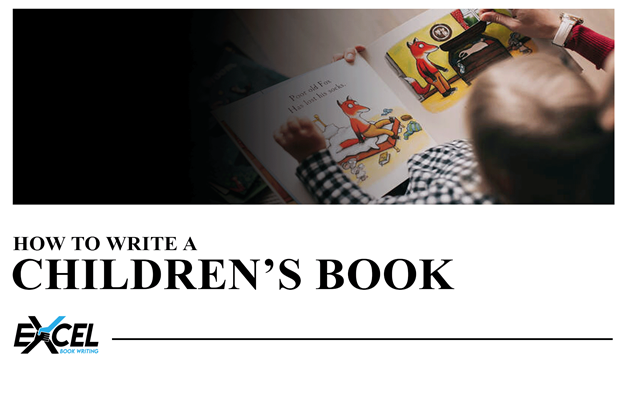How to write a Children’s Book

Writing a children’s book can be a magical and rewarding experience, but it also comes with
its own unique set of challenges. Crafting a story that not only entertains but also
educates and inspires young readers requires careful thought and planning. Whether you're a
seasoned writer or a beginner, understanding the landscape of children's literature is
crucial to creating a book that resonates with both children and their parents.
Before putting pen to paper, it's important to immerse yourself in market research. The
children's book market is dynamic, with trends and popular genres constantly evolving. By
staying informed about what is currently resonating with young readers, you can tailor your
story to meet their interests and needs. For instance, themes such as diversity,
environmental conservation, and emotional resilience are currently popular and can provide a
rich foundation for your book. Additionally, examining bestselling children’s books can give
you insights into successful storytelling techniques and what captivates young audiences.
Understanding the target age groups for children's books is another essential step in the
writing process. Children’s literature is typically divided into several categories, each
with its own characteristics and expectations:
- Picture Books (ages 0-5): These books are designed for the youngest
readers and rely heavily on illustrations to tell the story. The text is minimal and
often rhythmic or rhyming to engage young minds.
- Early Readers (ages 5-7): Aimed at children who are beginning to read
independently, early readers feature simple sentences, repetitive language, and engaging
illustrations that support the text.
- Chapter Books (ages 7-9): These books are for children who are
transitioning to more complex stories. They include short chapters, a larger font, and
illustrations that appear sporadically throughout the text.
- Middle Grade (ages 8-12): Middle grade books delve into more
sophisticated plots and character development. They tackle themes relevant to pre-teens
and often span a range of genres, from fantasy to realistic fiction.
- Young Adult (ages 12+): While technically not part of traditional
children’s literature, young adult books cater to teens and often explore more mature
themes and complex characters.
Once you have a clear understanding of your target audience, the next step is identifying
your niche. The children's book market is competitive, so finding a unique angle or theme
can set your book apart. Consider what makes your story special: Is it a unique character,
an unusual setting, or a novel approach to a familiar theme? Drawing inspiration from your
own experiences, interests, and passions can help you create a distinctive voice and
perspective. For example, if you have a background in science, you might write a story that
introduces scientific concepts in a fun and accessible way. Alternatively, personal
experiences with overcoming challenges can form the basis of an empowering and relatable
story for children.
By conducting thorough market research, understanding your target age group, and finding a
unique niche, you lay a strong foundation for writing a book that
stands out in the crowded marketplace. In the following sections, we will delve deeper into
each stage of the writing process, offering practical tips and insights to help you bring
your story to life.
Inspiration Sources
Finding inspiration for a children's book can come from a variety of sources. Here are some
common ways to spark your creativity:
- Personal Experiences: Your own life experiences can be a rich source of
inspiration. Reflect on your childhood memories, adventures, and the lessons you
learned. Personal anecdotes can provide authentic and relatable material for your story.
- Fairy Tales and Folklore: Classic fairy tales and folklore are timeless
sources of inspiration. They often contain universal themes and moral lessons that can
be reimagined in new and creative ways. Consider how you can put a fresh spin on a
familiar tale or introduce diverse cultural elements.
- Children’s Interests and Questions: Pay attention to what fascinates
children. Their interests, whether it's dinosaurs, space, animals, or magic, can provide
a strong foundation for a story. Additionally, children's questions about the world can
lead to compelling narratives that both entertain and educate.
- Observation and Imagination: Sometimes, simply observing the world
around you can spark an idea. Watch how children play, interact, and solve problems. Use
your imagination to create whimsical worlds or fantastical adventures that captivate
young minds.
Concept and Theme
Developing a strong central concept and theme is crucial for a children's book. The concept
is the main idea or premise of your story, while the theme is the underlying message or
lesson you want to convey. Here’s how to craft a compelling concept and theme:
- Simple and Clear Concept: The concept should be straightforward and
easy for children to understand. It could be as simple as a day in the life of a
mischievous puppy or an adventure in a magical forest. The key is to make it engaging
and relevant to your target age group.
- Resonant Themes: Choose themes that resonate with children’s
experiences and emotions. Common themes in children's literature include friendship,
bravery, empathy, and the importance of being true to oneself. Ensure that your theme is
woven naturally into the story rather than feeling forced or didactic.
- Universal Appeal: While your concept can be unique, the theme should
have universal appeal. This ensures that children from different backgrounds can relate
to and find value in your story.
- Consistency: Maintain consistency in your theme throughout the story.
Every event, character action, and piece of dialogue should contribute to reinforcing
the central theme.
Creating Relatable Characters
Relatable characters are the heart of any children's book. Here are some tips to create
characters that children can connect with and care about:
- Child Protagonists: Children often relate best to characters who are
their age or slightly older. Create protagonists who reflect the interests, fears, and
dreams of your target audience.
- Distinct Personalities: Give your characters distinct personalities and
traits. This makes them memorable and engaging. Whether it’s a curious kitten, a brave
young explorer, or a shy child who finds their voice, ensure your characters have unique
qualities.
- Emotional Depth: Even in a short children’s book, characters should
display a range of emotions. Show how they feel joy, fear, sadness, and excitement. This
helps children understand and empathize with the characters.
- Relatable Challenges: Place your characters in situations that children
can relate to, whether it’s making a new friend, standing up to a bully, or dealing with
a loss. The challenges should be appropriate for their age and provide opportunities for
growth and learning.
- Visual Appeal: In picture books and early readers, the visual design of
the characters is crucial. Work with an illustrator to create visually appealing
characters that enhance their personality and make them more engaging.
- Role Models: While it’s important for characters to be relatable, they
can also serve as role models. Show how they overcome obstacles, make positive choices,
and grow through their experiences. This can inspire and motivate young readers.
By drawing inspiration from various sources, developing a strong concept and theme, and
creating relatable characters, you can craft a children’s book that captivates and resonates
with young readers. In the next section, we will delve into the process of writing a book,
offering practical tips on story structure, language, and pacing to help you bring your
story to life.
Story Structure
A well-structured story is key to capturing and maintaining a child's interest. Most
children's books follow a simple yet effective structure that includes a clear beginning,
middle, and end:
- Beginning: Introduce the main character(s), setting, and the central
problem or conflict. This part should grab the reader’s attention and set the stage for
the story.
- Middle: Develop the story by building tension and presenting obstacles
the characters must overcome. This is where the action and plot twists keep the readers
engaged.
- End: Resolve the conflict or problem and provide a satisfying
conclusion. The ending should tie up loose ends and reinforce the theme of the story.
Language and Style
Using age-appropriate language is crucial in children's books. The language should be simple,
clear, and engaging:
- Vocabulary: Choose words that are easily understood by your target age
group. For younger children, use basic vocabulary and short sentences. For older
children, slightly more complex language is acceptable.
- Tone: The tone should be friendly and inviting. It can be playful,
serious, or even whimsical, depending on the story’s theme and the age group.
- Read-Aloud Quality: Many children's books are read aloud, so make sure
the text flows smoothly and has a rhythmic quality. Repetition and rhyme can be
effective, especially for younger audiences.
Word Count and Pacing
The appropriate word count and pacing vary depending on the target age group:
- Picture Books (ages 0-5): Typically 500-1,000 words. The pacing should
be quick, with a lot of action and visual cues.
- Early Readers (ages 5-7): Around 1,000-2,500 words. The pacing can slow
down a bit to accommodate more detailed storytelling.
- Chapter Books (ages 7-9): Generally 3,000-10,000 words. Pacing should
allow for more complex plots and character development.
- Middle Grade (ages 8-12): Typically 20,000-50,000 words. The pacing can
be more varied, with slower sections for character development and faster sections for
action and excitement.
Role of Illustrations
Illustrations play a crucial role in children's books by enhancing the story and engaging
young readers:
- Visual Appeal: Illustrations attract children and help hold their
attention. They provide visual cues that aid in understanding the story.
- Storytelling: Illustrations can convey emotions, settings, and actions
that complement the text. They add depth and richness to the narrative.
- Learning Aid: For younger children, illustrations help in learning new
words and concepts by providing a visual context.
Balancing Text and Images
Creating a cohesive and engaging book involves finding the right balance between text and
illustrations:
- Complementary Elements: Ensure that the text and illustrations
complement each other rather than competing for attention. The illustrations should
enhance and expand upon the text.
- Page Layout: Consider the layout of each page spread. Balance the
amount of text and the size of illustrations to create an aesthetically pleasing and
easy-to-read book.
- Whitespace: Don’t overcrowd the pages. Use whitespace effectively to
make the book visually appealing and to give the reader’s eyes a place to rest.
Feedback from Others
Getting feedback is essential to refine your story:
- Beta Readers: Share your manuscript with children, parents, and fellow
writers to get diverse perspectives.
- Constructive Criticism: Be open to feedback and use it to improve your
manuscript. Look for common themes in the feedback and address any concerns.
- Professional Opinions: Consider joining a critique group or hiring a
professional manuscript evaluator for more in-depth feedback.
Professional Editing
Hiring a professional editor can greatly enhance the quality of your manuscript:
- When to Hire: Consider hiring an editor after you’ve revised your
manuscript based on initial feedback. A fresh set of professional eyes can catch issues
you might have missed.
- Types of Editing: Different types of editing include developmental
editing (focusing on structure and content), copyediting (focusing on grammar and
style), and proofreading (final check for errors).
- Finding an Editor: Look for editors with experience in children's
literature. Check their credentials, ask for samples of their work, and read reviews
from other authors.
Writing a children’s book is a multifaceted process that involves creativity, careful
planning, and collaboration. From finding inspiration and developing a strong concept to
creating relatable characters and ensuring a seamless blend of text and illustrations, each
step is crucial in crafting a book that captivates young readers. By following these
guidelines and seeking feedback and professional help when needed, you can create a
children’s book that not only entertains but also educates and inspires. Happy writing!


